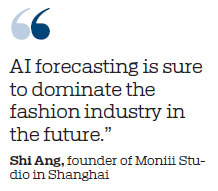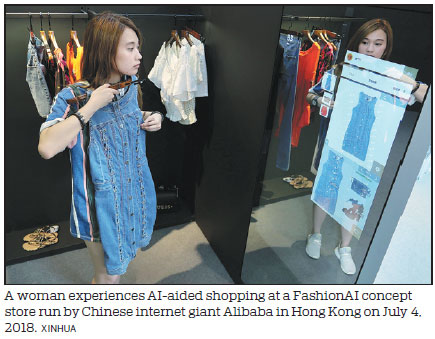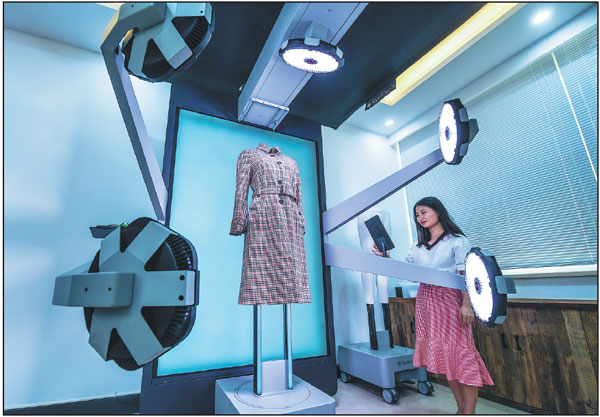The hi-tech recipe for success
New book by Donghua University explains how artificial intelligence can help to bolster the development of the domestic fashion industry
Artificial intelligence has in the past few years completely reshaped how businesses operate. Financial institutes use it to forecast trends in the stock markets. Law enforcement use it to identify suspects.
The fashion industry, too, stands to benefit greatly from this technology, according to a new book by Donghua University.

"AI-based approaches provide designers with more objective references to create their works, compared with traditional forecasting methods which mainly rely on the predictions of experienced experts," said Gu Wen, one of the co-authors of the book and a teacher from Donghua University's college of art and design.
When applying the AI methods, Gu stressed on the importance of making full use of the pools of diverse data-sets accurately and efficiently so as to prevent designers and brands from making inaccurate predictions of customer preferences.
In terms of Shanghai fashion forecasting, the book suggests that the industry can build a Shanghai Fashion Data Warehouse which collects and analyzes data gathered from various sources, including fashion shows, the retail market and exhibitions.
"Such a database will help with the application of an AI system to local fashion trend forecasting, but it has not been set up yet," said Gu.
Gu pointed out that IBM Watson, a computer system capable of answering questions in natural language, is already being used by designers to help make decisions and gain new insights. The system can be used to search for clothes with specific elements or design patterns.
AI Color Trend, a database on color fashion trend analysis and guidance, was also released by the China Textile Information Center and the National Textile Development Center in 2017. Available as an app for mobile phones, the system can analyze data from international fashion weeks, brands as well as the most popular colors and fabrics in the domestic market, in turn helping designers with their decisions on what colors or materials to use.
Shi Ang, who founded his brand Moniii Studio in Shanghai, said that he used to rely on magazines for news about the latest fashion trend. These days, however, there are many other sources he can turn to.
"I was recommended by others to refer to WGSN, a global style network dedicated to helping designers deliver the right products through trend forecasting, live analysis and design tools. A few tech companies have developed apps that specialize in such a service as well," he said.
Given how AI is quickly proliferating all types of industries, Gu said that it is imperative the fashion industry start to attract individuals who are not just knowledgeable in fashion but technology as well.
"People who master the skills of technology and fashion insights are in urgent need in the domestic industry. Most designers lack the technical knowledge to develop forecasting tools," she said.
Gu also recommends that designers should familiarize themselves with Shanghai's distinctive culture and fashion demand, as opposed to simply following trend forecasts, to better cater to the market.
Shi echoed this statement, noting that trend forecasting should only be used as a reference, and that designers should create their own styles based on each brand's unique features.
"AI forecasting is sure to dominate the fashion industry in the future. But the inspiration of a designer remains the soul of a brand. This cannot be predicted through data analysis. The brain of a designer can never be replaced," he said.
caochen@chinadaily.com.cn

|
A staff from a clothing manufacturer in Tongxiang, Zhejiang province, uses an AI equipment to capture the 3D image of the company's new product. Xinhua |
(China Daily 06/07/2019 page6)















